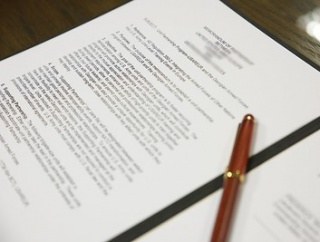Writing for Business Success/Business writing in action/Internal memos
Memorandums, or memos, are quite similar to internal email messages. However, memos originate from a time when all written communication was conducted on paper. As digital technology becomes more widely available in offices around the world, paper memos are increasingly being replaced by emails. Also, in larger organisations, messages intended for all staff may be communicated through an announcement or blog post on an internal company website. It will depend on the culture of a business, and the technology available to it, what channels of communication are used for different messages.
On this page, we give just a brief explanation of memo-writing, as many of the techniques you have learnt for writing emails also apply to memos.
Memos, like emails, contain a 'To' and 'From', and a meaningful subject line, and state the reason for the communication immediately in the message. The body of the message in a memo also needs to be well organised for readability, and may include a call for action at the end. However, memos differ due to stricter formatting conventions, and do not require a closing phrase or a signature.
Memos may be addressed to one person or many people. They are only used for internal messages (i.e. within an organisation); they are not used to communicate with customers or other businesses.
The purpose of a memo could be to announce a change in policy, an upcoming event, or a change in Human Resources. They may seek more information, or request that someone take action. They may be written to persuade someone to support an initiative, or change a policy. They can also be used to thank or praise someone.
Similar to an email, you should pay attention to the following points when composing a memo:
- Audience
- Purpose
- Style
- Heading
- Date
- Subject Line
- CC
- Body
- Format
- Closing
| Example: traditional internal office memo |
| To: Jason Harris
From: Olivia Alvarez Date: March 1, 20XX Subject: Employee Appreciation Spotlight Jason, Our yearly employee appreciation dinner will be held on Friday, June 10. Due to your excellent performance in the last year - especially your work in the Northwest Region! - we would like to feature you as one of our spotlight employees. As a part of this spotlight, we would love to give everyone a chance to get to know you better. If you are interested, please write a short (250 words or less) paragraph about yourself. If you’re not sure where to start, here are a few question prompts:
Please let us know by March 15 if you’re interested, and, if you are, please submit your paragraph by March 30. Looking forward to seeing you there! Olivia |
As you can see from this example, a memo has well-defined formatting. The author of this memo does a good job using bullet points to further organise the information to make it easier to read.
Acknowledgements
The content on this page was adapted from Internal Emails and Memos, authored by Robert Danielson and provided by Lumen Learning under a CC-BY-4.0 licence. The content is part of the online course Business communication skills for managers.
